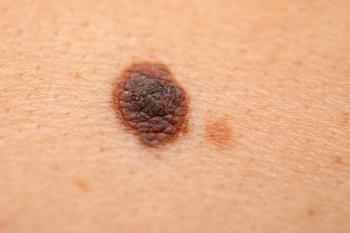
Large variety of multiple myeloma treatment options presents challenges
There now exist numerous treatment options for multiple myeloma but how best to sequence them is still under study
Recent years have brought a growing and potentially-bewildering set of treatment options for multiple myeloma, noted experts at the 58th American Society of Hematology (ASH) Annual Meeting in San Diego, at a panel held Sunday, December 4.
Oral proteasome inhibitors, new IMiD immunomodulators, kinase inhibitors, monoclonal antibodies, and immunotherapies like chimeric antigen receptor (CAR) T-cell therapies and PD-1 immune checkpoint blockade are just a few of the newer categories of myeloma treatments. Recent FDA approvals for myeloma treatments include thalidomide, lenalidomide, melphalan, daratumumab, elotuzumab, and ixazomib.
Those advances have come alongside new tools for monitoring disease progression and treatment response, noted Noopur Raje, MD, of Massachusetts General Hospital Cancer Center in Boston.
“What’s happened with all of the new treatments we have is the addition of better imaging modalities and better genetics tools as well as disease monitoring,” Raje said. “We have all these different pieces of the jigsaw puzzle. Can we figure out the best way to put this puzzle together?”
Supportive care with bone-targeting agents and other medications is another piece of the puzzle that is “important from the get-go,” Raje noted. Prophylactic treatment should be undertaken to protect patients against thrombosis and infection, for example.
The ‘backbone’ of contemporary myeloma care
The immunomodulatory drugs thalidomide and lenalidomide are becoming the “backbone” of contemporary myeloma care, Raje noted. Particularly with younger patients, “continuous improvement” is seen in response to combinations of newer agents, she said.
“We are seeing close to a 100% response rate,” she said. “Combinations will allow us to improve responses and cure an even higher fraction of patients.
Because most myeloma patients eventually relapse, researchers are working to identify the optimal sequencing of different treatment regimens. Much has yet to be learned.
Reviewing clinical trial findings, Raje ticked through a long list of initial and second-line myeloma therapy agents: the proteasome inhibitors bortezomib and carfilzomib, immunomodulatory drugs like lenalidomide, alkylating agents like melphalan, cyclophosphamide, doxorubicin, and bendamustine, and dexamethasone and other steroids. Other myeloma treatments have been approved but not for frontline treatment.
“High-risk disease needs new drugs,” she noted. “Immuno-oncology will play an important role.”
Sequencing agents for different populations
It is not entirely clear how these agents should be sequenced for different patient populations.
Rational combinations and sequencing are also under study. Drugs with different mechanisms of action are particularly attractive because they can overcome genetic heterogeneity in myeloma cells.
The goal of initial myeloma management is always to achieve “deep and durable” responses, and continuous therapy improves the odds, Raje said. “We should try to keep patients on treatment so that can translate to better survival,” she said.
But treatment plans should also be tailored to account for patient age and frailty, and renal impairment, with an eye toward improved performance status and quality of life, she was quick to add.
Raje advised consideration of induction, upfront transplant, and maintenance, with maintenance therapy starting after 12 months of initial treatment. Among transplant-eligible patients, she advised a sequence of bortezomib-dexamethasone-lenalidomide (RVD) or carfilzomib, lenalidomide and low-dose dexamethasone (KRD) for transplant maintenance, for example, which can be followed upon relapse by pomalidomide and dexamethasone plus a proteasome inhibitor (POM-DEX+PI). Daratumumab plus a proteasome inhibitor with an IMiD immunomodulator can be tried next, followed by cellular therapy.
Combination treatment regimens are now the norm, Raje said. Three-drug combination therapies like RVD are now “standard,” she explained. The available evidence suggests that adding a fourth drug to these combinations does not offer better outcomes to patients, but several phase 2 clinical trials are under way, so that could change.
Patients who relapse after several combination regimen and cellular therapy should be considered for a novel-agent clinical trial, Raje said.
Unfortunately, tools for predicting who will benefit from different regimens, or for predicting survival, are still investigational, Raje cautioned.
“Prognostic factors are evolving,” she said. Minimal residual disease (MRD) measurement with imaging is an excellent tool for clinical trials at the moment but is not ready for clinical treatment decision-making “prime time,” she noted.
Newsletter
Get the latest industry news, event updates, and more from Managed healthcare Executive.




















































